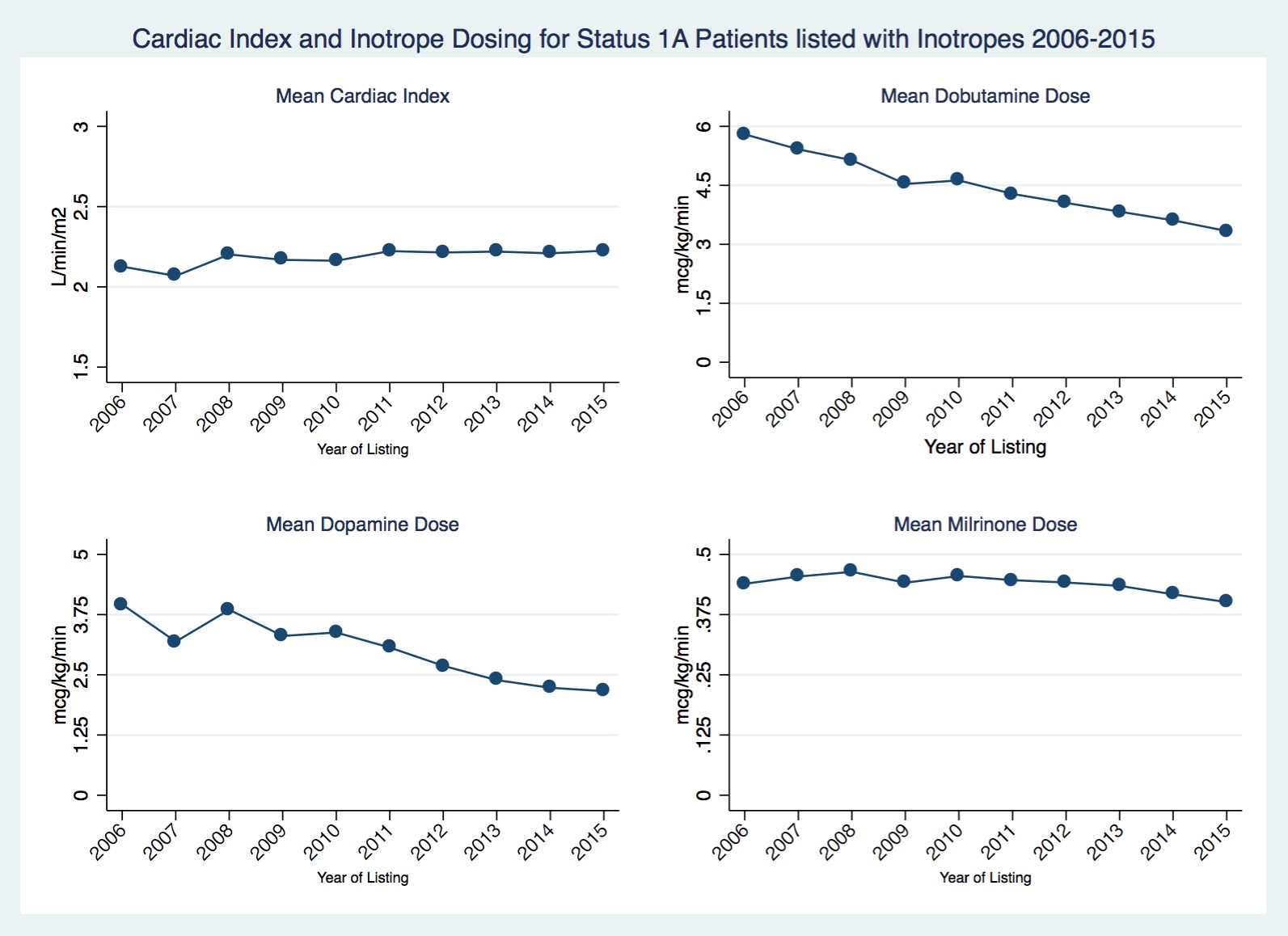Trends in the Number and Medical Urgency of Adult Heart Transplant Candidates Listed as Status 1A from 2006-2015.
1Pulmonary and Critical Care, University of Chicago, Chicago, IL
2Baylor College of Medicine, Houston, TX
Meeting: 2017 American Transplant Congress
Abstract number: 35
Keywords: Allocation, Ethics, Heart
Session Information
Session Name: Concurrent Session: Heart Waitlist and Allocation: Working to Get It Right
Session Type: Concurrent Session
Date: Sunday, April 30, 2017
Session Time: 2:30pm-4:00pm
 Presentation Time: 2:54pm-3:06pm
Presentation Time: 2:54pm-3:06pm
Location: E267
The wider geographic sharing of hearts in 2006 may have had unintended consequences for transplant center listing behavior. This project examines trends in the number and medical urgency of candidates listed as status 1A from 2006-2015.
Methods: The initial listing registrations of all adult heart only candidates added to the waitlist from 2006-2015 were analyzed in the Scientific Registry of Transplant Recipients dataset. Initial status, justifications and candidate factors were examined for trends by year. Logistic regression models with fixed effects by listing center, controlling for candidate factors, were estimated to provide adjusted trends in the odds of listing status 1A. Competing risks survival analysis was performed to provide adjusted trends in candidate waitlist survival.
Results: A total of 30,903 listings were analyzed. Status 1A listings increased from 18% to 26% of all listings. The most common justifications used to explain the increase in 1A status listings were inotropes (40%) and durable ventricular assist device placement (VADs) (20%). For status 1A candidates listed using inotropes as a justification, mean CI increased 5% from 2.1 to 2.2 L/min/m2 while mean inotrope doses decreased on average 40% (see figure). Overall when comparing 2015 to 2006, the adjusted odds of listing status 1A increased 109%. For candidates without a durable VAD, the adjusted odds of listing 1A increased 101%. Relative to status 2 patients, status 1A patients had 6.2 times higher unadjusted waitlist mortality in 2006, but only 2.6 times higher mortality in 2015. In adjusted competing risks survival analysis, status 1A candidates did not have higher rates of death or delisting due to illness when compared to status 1B or status 2 patients after 2008. All trends noted in the results were significant at p<0.01.
Conclusion: After wider geographic sharing of hearts was implemented in 2006, centers became more likely to list less medically urgent candidates as status 1A using lower dose inotropes and durable LVADs. Review of possible causes and solutions is indicated.
CITATION INFORMATION: Parker W, Churpek M, Fedson S, Garrity E. Trends in the Number and Medical Urgency of Adult Heart Transplant Candidates Listed as Status 1A from 2006-2015. Am J Transplant. 2017;17 (suppl 3).
To cite this abstract in AMA style:
Parker W, Churpek M, Fedson S, Garrity E. Trends in the Number and Medical Urgency of Adult Heart Transplant Candidates Listed as Status 1A from 2006-2015. [abstract]. Am J Transplant. 2017; 17 (suppl 3). https://atcmeetingabstracts.com/abstract/trends-in-the-number-and-medical-urgency-of-adult-heart-transplant-candidates-listed-as-status-1a-from-2006-2015/. Accessed December 28, 2025.« Back to 2017 American Transplant Congress
